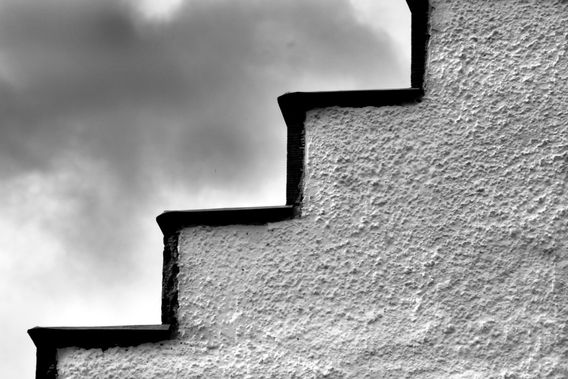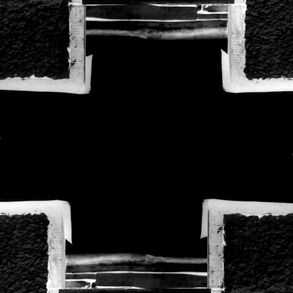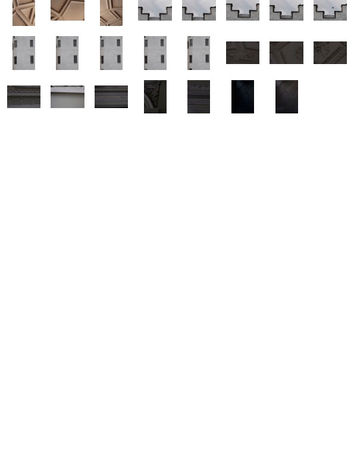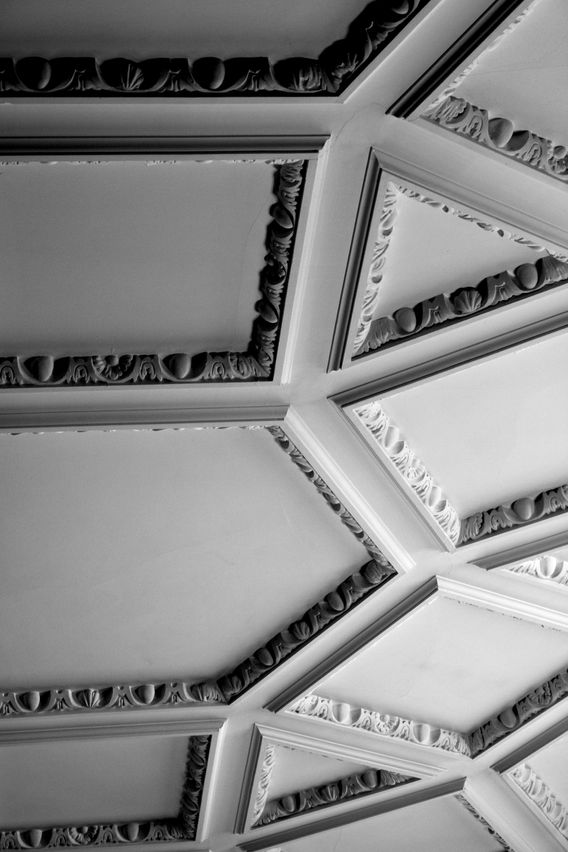Medieval Heritage
The first stage of my abstraction project brings me to castles built in the Middle Ages. These photos show the abstraction of the buildings of Blair Atholl Castle, Scotland, Alnwick Castle, Northumberland and Bamburgh Castle, Northumberland. These photos aim to show the abstraction of the different elements of architecture of the castles, such as the walls of stone, the doors, the ceiling patterns etc. Below, I have provided a timeline of the history of each castle as well as other images showing the current states of the castles and any other artefacts that reflect the history of the buildings.
Critical Link


Contact sheet
420AD- Bamburgh Castle's Foundation is used as the capital city of the Kingdom of Bernicia
547AD- King Ida of Bernicia captures the castle
590AD- Falls under Anglo-Saxon control
1095- Normans build a new castle on the site. William II attempts to besiege the castle after a revolt supported by the owner Robert de Mowbray, Earl of Northumberland. He was captured and his wife surrendered control after threats by the King to blind her husband.
1191- King Richard I appoints Sir John Forster as Governor of Bamburgh Castle
1346- Battle of Neville's Cross- King David II of Scotland held prisoner following the Scot's defeat
1464- Wars of the Roses- The castle was subject to a 9 month siege by Richard Neville, 16th Earl of Warwick on behalf of the Yorkists.
1500s- Forster family continued to serve the monarchy with governors until another Sir John Forster was granted ownership after the Dissolution of the Monasteries.
Late 1600s-1704- Forster family retained ownership until Sir William Forster was declared bankrupt and the property was sold to Lord Crew, Bishop of Durham after an Act of Parliament in 1704.
1894- Castle bought by industrialist William Armstrong. The family retains control today.
World War II- Pillboxes established in the sand dunes to protect from German invasion. In 1944, a Royal Navy Corvette was named HMS Bamborough Castle.





1096- Ivo de Vesci, Baron of Alnwick, began construction of Alnwick Castle
1136- first documented mention of the castle when it was captured by King David I of Scotland
1172-1174- William the Lion, King of Scotland, besieges the castle twice before being captured outside the castle grounds after the Battle of Alnwick 1174.
1212- Eustace de Vesci, Lord of Alnwick, was accused of plotting against King John. John ordered the demolition of the castle however these orders were never carried out by Alnwick.
1253- John de Vesci inherits his father's titles. King Henry III conferred the wardship of the estates to a foreign kinsman due to John being underage. It was under guardianship of Anthony Bek, who sold it to the Percys.
1399- Henry Percy, 1st Earl of Northumberland, rebelled against King Richard II and helped dethrone him
1403- Northumberland and his son, Harry Hotspur, rebelled against King Henry IV. Hotspur was defeated at the Battle of Shrewsbury and the castle surrendered after bombardment in 1403 after Henry pursued the Earl.
1461- The castle is held by Lancastrian forces during the Wars of the Roses. It was held against the Yorkist Edward IV. The castle surrendered in September 1461 after the Battle of Towton, which resulted in the deposition of Lancastrian King Henry VI
1462- The castle was recaptured by Sir William Tailboys, who then surrendered it to Hastings, Sir John Howard and Sir Ralph Grey in July. In the Autumn, Lancastrians took back control after a sharp siege. Hungerford and Whittingham held Alnwick and forced the Earl of Warwick to flee after the arrival of Pierre de Breze and Margaret of Anjou, Lancastrian sympathisers.
1470s- after several changes of control between the Yorkists and Lancastrians, the 4th Earl of Northumberland pledged fealty to Edward IV and the castle was returned to the Percys.
1572- Thomas Percy, 7th Earl of Northumberland, one of the leaders of the Revolt of the Northern Earls, was executed and the castle was mostly uninhabited.
1594- 9th Earl of Northumberland placed his distant cousin Thomas as the constable, however he was killed fleeing the Gunpowder plot in 1605 and the Earl was imprisoned.
1650- Oliver Cromwell used the castle as a prison following the Battle of Dunbar.
1766- Elizabeth Seymour and Hugh Smithson were given the title of 1st Duke and Duchess of Northumberland by George III
2025- Currently home to Ralph Percy, 12th Duke of Northumberland and is the 2nd largest inhabited castle in England after Windsor. The castle attracts 600,000 visitors per year


Blair Castle is said to have been started in 1269 by John I Comyn, Lord of Badenoch, a northern neighbour of David I Strathbogie, Earl of Atholl, who started building on the Earl's land while he was away on crusade. Upon his return, the Earl complained about the interloper to King Alexander III, won back his land, and incorporated the tower that had been built into his own castle.
David II Strathbogie, Earl of Atholl, forfeited the titles and estates after rebelling against King Robert the Bruce in 1308, and the King granted them to Niall mac Cailein.
John Murray, son of the second Earl of Tullibardine, was created Earl of Atholl in 1629, and the title has since remained in the Murray family.
During the Wars of the Three Kingdoms of the 17th century, the Murrays supported the Royalist cause, which led to Blair Castle being taken by Oliver Cromwell's army following his invasion of 1650.
The restored Charles II created the title Marquess of Atholl for John Murray, 2nd Earl of Atholl (1631–1703). The title Duke of Atholl was granted to the 2nd Marquess in 1703.
When Viscount Dundee launched the first Jacobite rising in April 1689, Atholl decided to remain loyal to the Government (although two of his sons joined the Jacobites).
In July Ballechin refused entry to Atholl's whiggish son and heir, Lord John Murray. Murray laid siege to the castle, and General Mackay was approaching to join him and to seize it for the Williamites. Viscount Dundee relieved the castle, and the crucial Battle of Killiecrankie was fought because Dundee did not want to retreat and surrender the castle to Mackay. Dundee and his officers and clan chiefs held a Council of War at the castle on the eve of the battle, on 26 July. The next day, the Jacobites won the battle but Dundee was killed.
In the Forty-Five, Blair Castle was occupied twice by Prince Charles Edward Stuart and his Jacobite army: in early September 1745, for several days, and then in early February 1746, again for several days. However, the Jacobites then unwisely abandoned it and Government forces, including Lowland Clan Agnew then occupied it. They held Blair Castle against the Jacobites, who laid siege to the castle during the last stages of the rising, in March 1746 they were besieged to near starvation until the Jacobite forces withdrew to fight the British Government forces at the Battle of Culloden.
1844- Queen Victoria and her consort, Prince Albert, visited and stayed at Blair Castle.
Part of the castle was converted to a hospital during the First World War
10 March 2011- a fire broke out at the clock tower of castle (not part of the medieval fabric), causing the tower's roof and second floor to collapse into the first floor. The clock tower was restored in 2012.

Developments







































